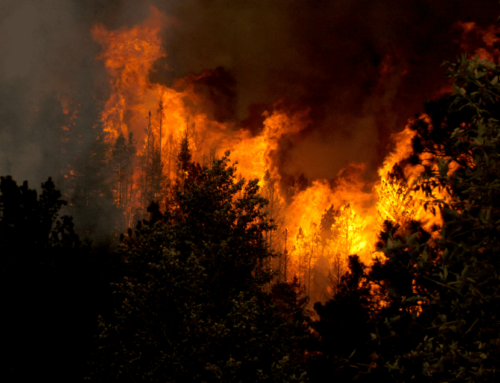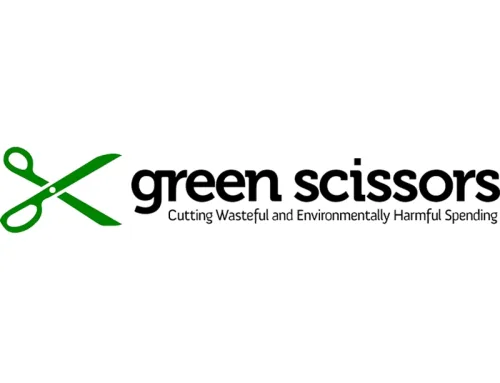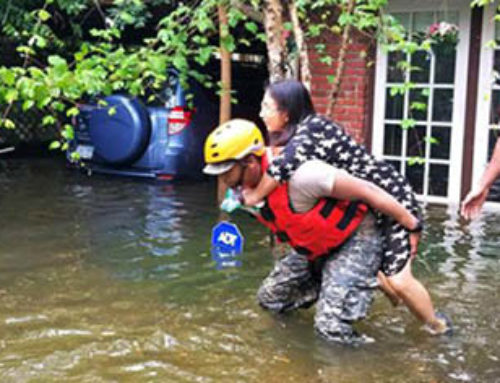Wildfires are a growing problem in the United States, particularly in the West. From such famous disasters like the Camp Fire, which destroyed the city of Paradise, California in 2018, to even one last month in Taxpayers for Common Sense’s backyard. Because of climate change, the threat from wildfires is growing and evolving. As federal watchdogs, it’s our job to keep track of how the federal government spends its money, so with higher-cost fires burning more frequently, we’ve had to keep track of larger sums of money than ever before. According to CBO estimates, more than double the average number of acres burned between 2017 and 2021 as did between 1987 to 1991. This growing threat has come with a hefty price tag, with the average annual cost of billion-dollar wildfire events increasing from $1.3 billion in the 1990s to $9.6 billion in the 2010s.
In the last two years the federal government has increased its financial commitment to wildfire management. The Infrastructure Investment and Jobs Act (IIJA) of 2021 and Inflation Reduction Act (IRA) of 2022 appropriated billions of dollars toward forest health and wildfire risk management activities. To better direct this new spending, the IIJA also established the Wildland Fire Mitigation and Management Commission. This Commission – which is chaired by USDA, DOI, and FEMA but consists of other federal agencies, state, local, and tribal governments, and private sector partners – is tasked with forming federal wildfire policy recommendations.
Late last month, TCS submitted comments to the Commission in advance of a new analysis we will release next week cataloguing federal wildfire spending across the federal government. This report isn’t TCS’ first on wildfire, in fact, we released a similar report back in 2000 called From The Ashes: Reducing the Harmful Effects and Rising Costs of Western Wildfires. Suffice it to say, we’ve been tracking this issue for quite some time. And many of our previous recommendations still ring true today.
With new resources available, it’s more important than ever to understand the complex web of wildfire-related spending that spans dozens of agencies and departments and the billions of dollars in new spending flowing through them. Tracking and accounting for this new spending is critical. As should be the case across the federal government, taxpayers have a right to know where and how their money is being spent. But while the IIJA required some oversight, the IRA includes no such requirement. Without clear and detailed information about where money is going, both geographically and on which programs, knowing the impact of these investments becomes significantly more difficult.
Another one of our recommendations is focusing on disaster prevention and mitigation. If you’ve been following along with our disaster preparedness and response content for any amount of time, you’ll know that one of our favorite phrases is “pre-sponding.” Pre-sponding means investing in mitigation as a complement to disaster recovery. This can be either pre-disaster mitigation or using post-disaster dollars to make communities less vulnerable in the future. In short, we can throw all the money we want into responding to disasters, but creating more resilient communities, resulting in needing fewer disaster responses overall, just makes sense.
Understandably, the conversation around wildfire often focuses on suppression, and the resources needed for the thousands of firefighters who risk their lives to keep communities safe. Firefighters are very important and must be fairly compensated for the difficult and dangerous work they undertake on our behalf. But focusing too much on suppression runs a risk of shifting resources away from vital non-fire related programs that can be just as beneficial, if not more so, to preventing widespread destruction. Devoting more resources to risk mitigation and better fire management also means firefighters and their communities can be at lower risk, less often.
But risk mitigation efforts need to be evaluated in a way that is results-oriented and productive. For example, fuel reduction projects should be measured by the number of high-risk communities protected, instead of numbers of acres treated, to accurately gauge the progress and to direct future spending decisions. Setting productive metrics is especially important as USFS has been found to be double or even triple counting numbers acres treated by various methods, thereby inflating fuel reduction progress.
Post-fire rebuilding and recovery is also an important piece of the puzzle. Rebuilding and recovery needs to focus on reduction of, and pre-sponding to, future fire risks, which means adopting appropriate building codes and zoning regulations and better landscape management, especially in Wildland-Urban Interface (WUI). And any federal post-fire assistance should incentivize smart rebuilding practices and disincentivize risky developments.
Wildfires are and must be part of the landscape, but that doesn’t mean every wildfire needs to cause loss of life and property. There are many effective strategies like prescribed fires, responsible development, retrofitting properties, and reimagining the landscape to be more resilient. By being smarter about wildfires, we can save lives, save money, and create a better, healthier forest and wildland ecosystem.











Get Social